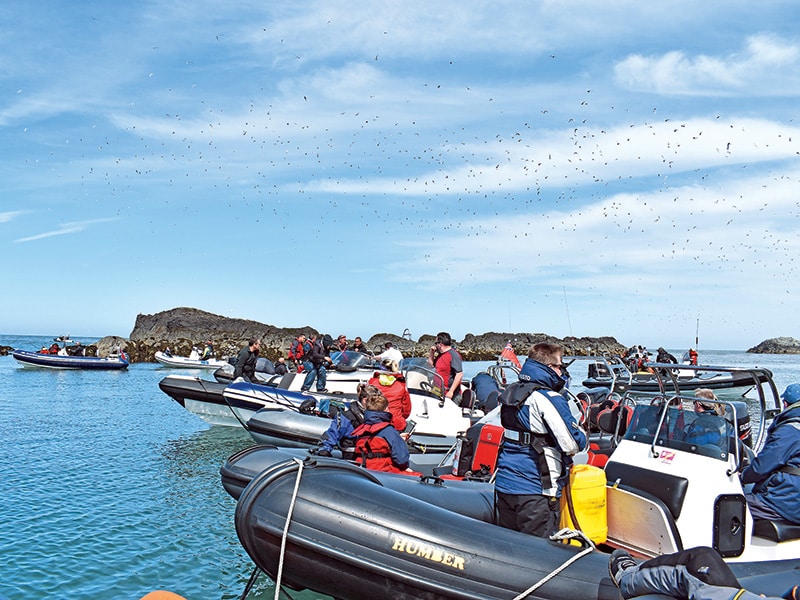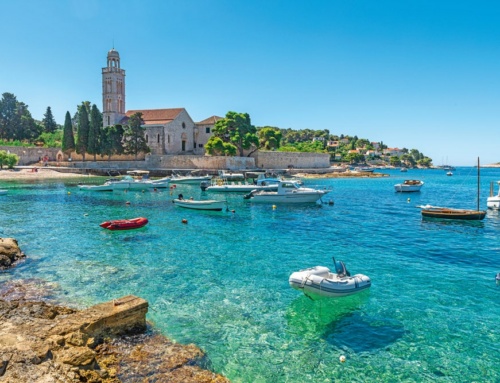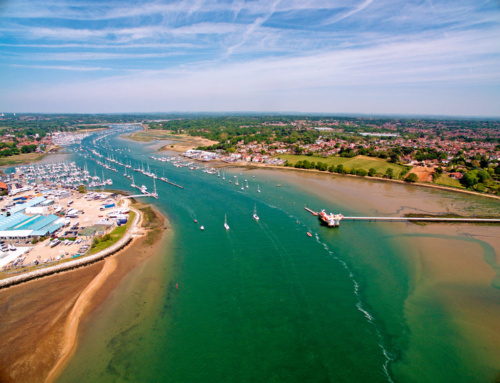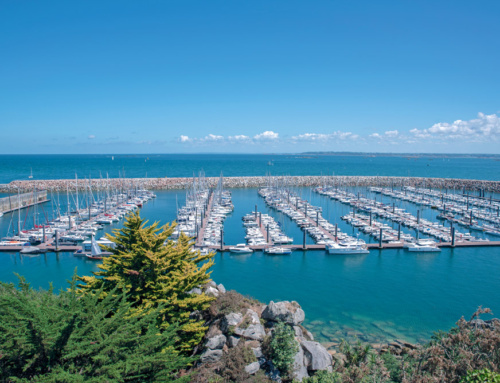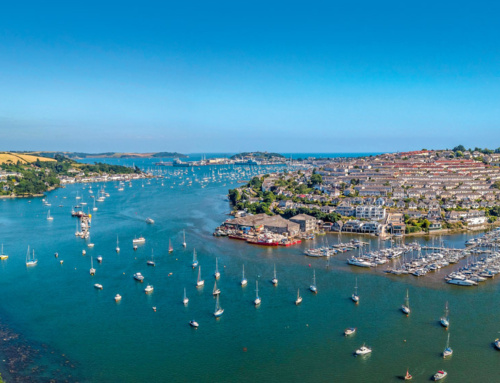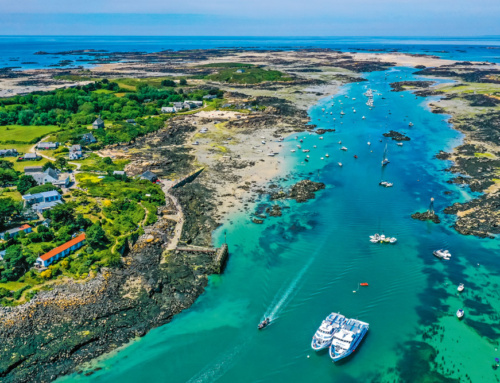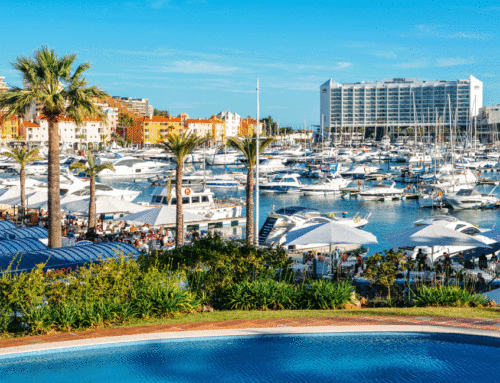- Very often the fact that safety increases with numbers means that crews will press on in less than ideal conditions.
- I am incredibly lucky to have been able to have a go at the helm of this 44-ton, 2500hp beast, which for me was a childhood dream come true.
- It’s safe to say that storm Emma did not discriminate.
- For the vast majority of us, lifeboats are truly special craft.
Jonathan Peers and his fellow RIB enthusiasts ‘set sail’ to partake of a host of experiences off the Red Dragon coast….
As Christmas becomes a distant memory, and the gut-wrenching pain of indigestion and visiting family slowly fades, we as boat owners invariably start to look forward to the boating season ahead. For most of us, this will mean we have to set about carrying out some kind of work – be it boring routine maintenance, expensive repairs put off from the previous year or, better still, exciting upgrades.
Looking out through the window at the drab grey sky, noting that even the local ducks are sheltering from the rain, it can be hard to remember those long hot summer days from only a few months ago. Harder still is trying to get enthusiastic about getting the boat out, despite our love of the water and all things ‘boaty’. At times like this, you can be forgiven for putting off some of the more mundane tasks, but if you are like me and your boating season starts in March, then you will have no choice but to don the thermals, take a deep breath and get cracking. Failure to do so will result in lost time on the water, something that will surely hurt once the brighter days start to arrive.
For me, having a relatively new outboard on the back of Northwind Challenger, I am tied to having my services done by a dealer, in order to maintain the warranty. I have deliberately timed this so that the service intervals land in the off season, thereby avoiding having to take any precious time out of my boating to then trailer my boat down to the boatyard.
Mid-February comes around and I force myself to book the boat in for its service. Removing the boat’s cover, I decide to evict the wildlife that has decided to make my pride and joy their home, and despair once again at the amount of mould that has formed in just about every nook and cranny of the console and jockey. I can’t for shame present this sorry-looking craft to any marine engineer, and so set about the thankless task of giving her a well-overdue bath – in sub-zero temperatures.
Amazingly, despite the misery, once the cobwebs and field mice have gone, and the GRP surfaces have returned to their glorious white colour once again, I can’t help but take a moment to sit at the helm and reflect on some of the many memorable times afloat. This is the ticket, this is my turning point; my enthusiasm is now running overtime amid the sudden realisation that I now only have a month left to get everything done – very much like leaving your school homework until Sunday night!
Of course, it’s one thing having a boat that’s all set for the water, but it’s quite another thinking of something worthwhile to do with it, especially early on in the season when the weather tends to be somewhat unpredictable – all too often leading to scuppered plans and disappointment.
I often talk about the virtues of social media, and the wealth of knowledge that it has to offer. The regular contributors are equally enthusiastic when it comes to making good use of their boats, and love nothing more than cruising in company. Nick Hopper is one such regular, and last year he swapped his Ribcraft 585 for a 6.8 Shearwater cutter rigged with a 200hp Yamaha. Nick was keen to share his first major outing following the run-in of the new engine, and so set about organising a cruise, with the invitation being open to anyone with a suitable craft and properly equipped crew.
Previous cruises around the North Wales coast have included circumnavigations of Anglesey, and passages along the Llyn Peninsula to Morfa Nefyn and Bardsey Island. For this one, Nick decided to opt for a shorter passage, but one that would have more meaning for those taking part. Unfortunately, when the cruise involves circumnavigating Anglesey, the crews taking part have a tendency to want to complete the loop as quickly as possible, without taking the time to take in any of the sights this amazing island has to offer. For this reason, the decision was made to launch from Caernarfon (on the mainland side of the Menai Straits) and stick to the west coast of Anglesey towards Holyhead, and the offshore bird sanctuary at the Skerries lighthouse.
The Skerries gets its name from the word ‘skerry’, which is a small rocky reef or island. The lighthouse that sits atop this rocky island not only marks this hazardous rocky outcrop but also the very top left corner of Anglesey itself. Ships from all over the world use this landmark as an essential navigation waypoint as they make their final turn for the approach to the busy port of Liverpool.
Now, when Nick first announced his intention late on in 2017, he spoke with me about ideas for the cruise, as Holyhead is my home port. We very quickly agreed that we should head directly for the Skerries, before dropping back down into Holyhead for lunch in the marina. Being in regular contact with the local RNLI stations, I decided to speak with Tony Price, coxswain of the Holyhead lifeboat. After explaining that I was going to be joined by what was set to look like an armada of RIBs in the marina, he (Tony), in his usual, infectiously enthusiastic manner, agreed to provide us all with a guided tour of their all-weather Severn-class lifeboat. This was set to be one of the highlights, as I don’t believe that anyone, whether they are a boat nut or not, can set foot on board any of the RNLI’s fleet and fail to be impressed.
Tragedy in Holyhead
Holyhead harbour is a designated port of refuge, accessible at all states of the tide, and protected on its seaward side by a formidable, mile and a half-long breakwater. This would have been of no use, however, on 2nd March 2018, when storm Emma decided to unleash all her fury on Anglesey, and in particular on the harbour itself.
On the night the storm hit, all eyes were on the harbour, and particularly the marina. With the floating pontoons and boats being tossed about like toys in a bath, there came the stark realisation that the all-weather lifeboat could become trapped and therefore taken out of service should the pontoons break free from their moorings. Coxswain Tony and the other launching authorities took the decision to muster the crew and set about moving the lifeboat from its berth. The harsh reality soon hit home when the crew were unable to safely board the boat, and the decision was made to launch the D-class inshore lifeboat – this was now a rescue mission to save their own boat. Once aboard, the engines were fired up, and with no time to spare, the lines securing her were cut, allowing her to seek refuge in the inner harbour. The storm raged on throughout the following day, destroying the marina and leaving a scene of utter devastation. More than 80 boats were either sunk or thrown onto the rocks at Soldiers Point – the point at which the breakwater meets land.
It’s safe to say that storm Emma did not discriminate. Seeing countless sailing yacht masts sticking out of the water at awkward angles where the marina was once situated, then looking beyond and seeing cruisers, charter fishing boats and even the large state-of-the-art wind farm support vessels piled up, wrecked, was quite frankly an upsetting sight. Most seafarers regard boats as living entities – each one has its own traits, and handling one can really become more of a relationship than simply operating a machine. Although there were no human casualties, with so many vessels lost (many of which I was familiar with), Holyhead harbour had now become a graveyard. Thanks to the valiant efforts of the crew the night before, the lifeboat lives on.
Hospitality
For now, the lifeboat remains stationed in the inner harbour, which unfortunately for us is a secure port and therefore off limits to the general public. Our own thinking was that our nicely planned lunch stop was now a non-starter – with an inaccessible lifeboat, and no marina pontoons to even tie up alongside, we really thought that a rethink was in order.
Always being one to claim a free coffee wherever available, I decided to pay Tony Price a visit in the crew room of the station. From our vantage point there, we looked out across the harbour and surveyed the destruction that lay before us. When asked if we were right to be looking at alternatives to visiting the station for our tour of the boat, the response was something of a surprise. Tony was quick to insist that things should go ahead, and that he would set about seeing that it would happen. In the event, Tony had not only sought permission from the harbour authority for our visit to the port, but also arranged for a number of crewmembers to meet us as he himself would be on holiday at the time of our visit.
In a huge stroke of luck, Tony’s stand-in coxswain was a gentleman by the name of Brett Hughes. Speaking with Brett on the phone prior to our cruise, he informed me that he was the skipper on the 27m military training ship Smit Don, also based in the port. Brett was keen for us to have a visit to remember and had already decided that we should join him on board, where we could eat our lunch and, more importantly, make use of the toilets – the main reason for us wanting to stop in the now destroyed marina.
Of course, Nick and I were both delighted that not only was the cruise still on, but in one phone call, one major logistical problem had been overcome (toilets), and something extra had been added to our itinerary.
The cruise
As planned, the pack launched from Caernarfon and made their way north. Now, being based in Holyhead ourselves, this wasn’t going to be much of a cruise for us, but rather we would act as a guide. Nevertheless, we still wanted a good run out, and so headed south to meet the pack near Rhosneigr, halfway up the western side of Anglesey. The seas were rough, with a horrible short chop. As we were passing Trearddur Bay, I felt my phone vibrate. A Facebook friend request from Brett had come through, along with a message checking on our progress, and informing us that the kettle was on ready for our arrival!
After a short stop at South Stack, we joined Nick at the front of the pack and headed for the Skerries, where we entered the lagoon in single file before rafting up. This is our go-to place when taking friends out on the boat, but for a lot of the crews this was their first visit. For some, this was a chance to pour a well-earned cup of coffee, while others topped up fuel tanks and swapped stories.
The real reason for visiting the Skerries is the wildlife. While the lagoon at the base of the iconic red and white lighthouse is home for countless seals, the rocky island itself is a major stop-off point for thousands of nesting seabirds. This offshore bird sanctuary is considered so important that every year during the nesting season, bird wardens make the lighthouse their home so that they can monitor numbers and migratory patterns. The last person to arrive here was Tony Hyde on Hawk – a 7.8m Ribcraft. He had been at the rear of the pack when everyone set off, and having seen a couple of boats stop near a yacht before continuing, he decided to take a closer look himself. As he approached, the yacht’s skipper beckoned him to draw alongside, and with a look of desperation begged Tony to take him in tow. Of course, there was no question about it – a tow was quickly established and the yacht was saved from certain grounding. The yacht’s skipper claims that he had asked one of the first boats in the pack for assistance, only for the reply to be ‘No, sorry, we are on a day out’! I am not interested in who this person was, but needless to say that was a truly awful thing to do. Help must always be offered one way or another, depending on circumstances. I’m sure I am not alone in thinking that a large group of RIBs can very easily be organised to assist a stricken boat, and, dare I say it, thoroughly enjoy the added excitement and rewards felt by helping someone in their time of need. This should add to your day rather than spoil your plans. Hell, who cares if it does spoil your plans? Does it really matter? Are you really so much more important than anyone else? The answer, I’m afraid, is a resounding NO.
OK, so that’s my little rant over with. The rescued family were extremely grateful and made a generous donation to the RNLI as a thanks to Tony Hyde after he refused to accept any kind of reward for his selfless actions.
Before leaving the lagoon, I ran through the approach to the port in Holyhead’s inner harbour with Nick. The pack was now drastically reduced to 10 boats, as the others decided that they would rather continue around the coast of Anglesey. After all the effort that had gone into organising our visit, I felt a little let down that so many people had gone their own way. As it happened, this reduction in numbers turned out to be a good thing, so all was not lost.
We hugged the coast as we headed south back towards Holyhead, taking in the rugged but colourful landscape of Carmel Head, Church Bay and Sandy Beach. Stopping at the Salt Island Dolphin navigation mark, I called up port control to gain permission to enter. Permission was duly granted, and we entered the inner harbour in single file. All crews were briefed beforehand that we were to be on our best behaviour – we had to stay together alongside the boats we were visiting, and on no account could we set foot on the quayside.
As we tied up alongside the Smit Don, port control were heard on the radio checking that we were actually expected, and that this was not some sort of pirate attack – which of course provided us all with a giggle!
For me, the Smit Don is a familiar sight in Holyhead Bay, and so I was keen to get aboard. Its role is to work with the RAF, training pilots. With everyone provided with a welcome brew, we were free to look around. As for myself, I got the main man to give me a tour of the bridge, living quarters and of course the engine room.
You would be forgiven for thinking that a boat is the last thing a trainee pilot would need, but as Brett explains what they do, you realise how important their role is. The obvious things are training search and rescue operations – such as winching from lifeboats. Less obvious is dragging a pilot through the water to simulate being pulled by a parachute in the event of an aircraft ditching into the sea. The most interesting, and rather shocking, activity is being involved with live-fire exercises with war-ready fighter jets by towing a special target behind her.
Once fully refreshed, it was off to see Holyhead’s Severn-class lifeboat, the RNLB Christopher Pearce. We decided that the best thing to do would be for all crews to travel the short distance along the harbour aboard just four of the RIBs. Once on board the lifeboat, everyone was free once again to look around, with members of the crew all willing to answer questions.
For the vast majority of us, lifeboats are truly special craft. Their very presence around our coastline provides us with a subconscious feeling of reassurance, without us ever wanting to rely on them. They’re built to withstand pretty much anything Mother Nature can throw at them, while being crewed by some of the most selfless volunteers on the planet, for the sole purpose of saving lives at sea. I am incredibly lucky to have been able to have a go at the helm of this 44-ton, 2500hp beast, which for me was a childhood dream come true. Seeing other people looking around her with similar enthusiasm and intrigue was probably why we were able to collect over £250 between us for the RNLI.
Before long, it was time to leave and make our way out of the harbour. I am sure I speak for every one of us that did visit the port when I say a huge thank you to Tony Price and Brett Hughes for making our day on the water one to remember.
Of course, RIB cruises don’t just take place in North Wales. Check out social media and online forums, get to know who the regulars near you are and make yourself known. Cruises when in company rarely get cancelled. Very often the fact that safety increases with numbers means that crews will press on in less than ideal conditions. If conditions don’t allow this, then alternative plans will be considered before being scrubbed completely.
Don’t let the cold grey weather get you down – it’s not forever, I promise. Press on with getting all those jobs done and reassure yourself that there will be many memorable days afloat to come. You will also find that all the regulars online are just as miserable as you are during the winter months, and so you will be in good company from the off!
Key facts
- The Skerries lighthouse was originally built in 1717
- The 23m-high tower stands 36m above sea level
- The light source was a coal-fired grate!
- It was converted to oil-fired lamps in 1804
- It was converted again in 1927 to electric power
- It became fully automated in 1987
- Light is visible for 20nm
- Lighthouses are maintained and monitored by Trinity House from Harwich, Essex
Photos: Ronnie Roberts & Peter Talbot

